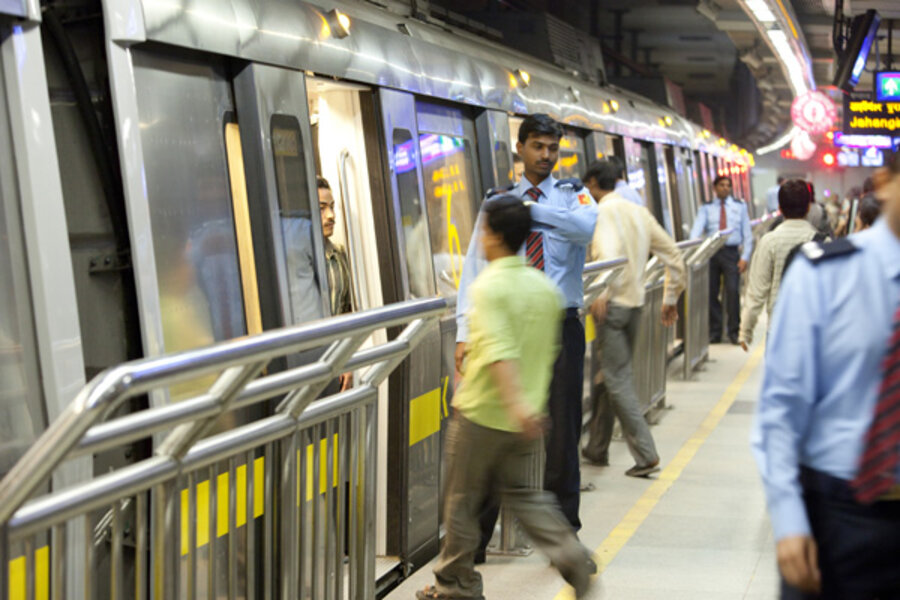New Delhi’s pride: its modern metro
Loading...
| New Delhi, India
Efficient, clean, air-conditioned, safe: The Delhi metro is a modern wonder amid India’s chaos. Sleek silver trains pull into stations like clockwork.
Orderly commuters line up exactly where the train doors will open. There’s no pushing, no shoving. Uniformed attendants in the busiest stations usher passengers aboard.
The classiness of this public transportation system seems to have imbued riders with heightened civility. (Perhaps someday even the “no spitting” signs won’t be necessary!)
Although photography is usually forbidden, given fears of terrorist attacks, I got special permission to take photographs at three stations for exactly one hour. (TV crews got only 15 minutes.) I must have been yelled at by 50 passengers who felt it their civic duty to tell me to stop. Fortunately, I had a letter of permission to brandish.
The first metro line opened in December 2006, under budget and three years ahead of schedule. When finished, the system will be bigger than the sprawling London Underground. Officials say the metro has kept more than 150,000 cars off the road, cutting pollutants in a big way. It has also acted as a stimulus for urban renewal.





